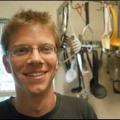“WE ABUSE LAND because we regard it as a commodity belonging to us. When we see land as a community to which we belong, we may begin to use it with love and respect.”
So wrote Aldo Leopold in his ecological classic A Sand County Almanac, published in 1949. That same year, Erle Halliburton experimented with pumping a slurry of oil and sand into a wellhole in Oklahoma, patenting a new process he dubbed “Hydrafrac.” Within the next five years, Halliburton was treating more than 3,000 wells a month that way.
Short for “hydraulic fracturing,” fracking—a word now included in Merriam-Webster—is the process of drilling and injecting fluid into the ground at high pressure in order to release oil or natural gas inside. Today, thanks to recent technological developments, more than a million fracking sites dot the U.S. landscape.
The environmental vision of Leopold and the actions of Halliburton that fateful March both haunt the recent literary collection Fracture: Essays, Poems, and Stories on Fracking in America. With literary genres that range from verse to essay and fable to investigative journalism, Fracture chronicles the ecological and cultural ruptures resulting from this highly controversial phenomenon. Co-editors Taylor Brorby and Stefanie Brook Trout have put together a devastating, disturbing collection that should be read in small bits, lest you be overwhelmed.
Sojourners columnist Bill McKibben, for his part, highlights tiny Sublette County in Wyoming, whose massive concentration of wells has created ozone levels to rival those of Houston and Los Angeles. Kathryn Miles writes of the surge in earthquakes in Oklahoma, a result of the millions of gallons of saltwater pulled out of each fracking site and reinjected into basement rock. (Oklahoma, she points out, is now the most seismically active state in the lower 48, three times more active than California.) Another author laments the loss of the stunning bluffs in the Driftless region of the Midwest, denuded for their “frac sand” that is the perfect size to hold open the cracks of shale rock while the gas seeps out—contaminating precious aquifers in the process. Then there is southeast Ohio, which one contributor declares “under occupation,” both above and below the surface of the earth.
But it is Williston, N.D.—the subject of several contributions in this collection—that adds the most profound dose of tragedy to the storyline. In the best poem in the volume, Debra Marquart writes, “north dakota i’m worried about you / the companies you keep all these new friends north dakota / beyond the boom, beyond the extraction of precious resources / do you really think they care what becomes of you.”
As various pieces detail the ugliness of the ecological devastation in Williston—most salient being the 1,100 oil spills in 2011 alone—Pope Francis’ reproach comes to mind: “The Earth, our home, is beginning to look more and more like an immense pile of filth.”
But there’s also the social upheaval in Williston and other “boomtowns”: the dramatic rise in drugs, noise, sex trafficking, and rape—a reflection, it seems clear, of the violation of the land. “Our quality of life is gone,” testified a Williston county commissioner in a state hearing. “Absolutely gone. My community is gone, and I’m heartbroken.”
“You think, my god, how is this possible, that humans could do this to the Earth?” muses Kathleen Dean Moore in her essay. “The obvious answer is, what’s possible for humans to do depends on the story we tell ourselves.” By the time you finish this staggering book, you will understand the need for what Jon Jensen, director of the Center for Sustainable Communities at Luther College in Iowa, calls “a countervailing narrative, a different way of picturing our world and our way of relating to the planet and to individual places.”
Fracture lays bare the choice presented by Aldo Leopold: We can understand land as community or as commodity. As this collection makes clear, the choice couldn’t be more urgent.

Got something to say about what you're reading? We value your feedback!

